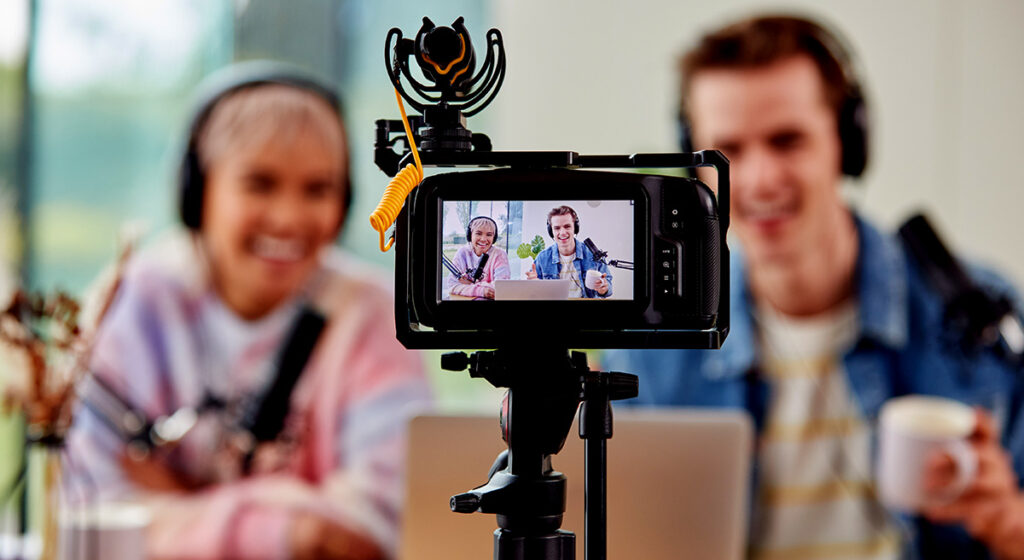Streaming services have become the most popular way to watch movies and TV shows in today’s digital-first world.
With the huge success of Netflix, Hulu, and Disney+, it’s clear that on-demand video delivery isn’t just a fad; it’s the way people will share entertainment and information in the future.
What if you could make your own streaming service and get in on this huge market?
If you want to build the next big thing as an entrepreneur or offer unique material directly to your audience as a business, learning how to start a streaming service can open up a world of possibilities.
Over-The-Top (OTT) platforms, which are streaming services, are no longer just for big tech companies.
Anyone can make their own streaming services now!
You can send content straight to your audience’s devices on your own terms if you have the right tools and plans.
This article will teach you everything you need to know to start a streaming service, from planning to technical setup, content control, and launch.
We’ll talk about the most important parts of a successful streaming platform, the different ways to make money with them, and how to make a great user experience that keeps people coming back.
This post will give you the information and tools you need to make your own OTT platform and start streaming your content to everyone.
You can use it to stream movies, TV shows, live sports, educational content, or even niche programs.
By the end of this post, you’ll have a good idea of how to make a streaming service that stands out in a crowded market, gives your audience value, and helps your brand grow.
So let’s begin your journey to making the next big streaming service!
What is Live Streaming?
Live streaming means sending videos over the internet in real-time.
It lets creators, businesses, and people connect with their audience right away, making their experience more engaging and captivating than with pre-recorded material.
Live streaming is an idea that has been around for a while, but it has become very popular online, especially as social media sites have grown.
There are many reasons to use live streaming, such as for fun, learning, advertising, and talking to friends and family.
In the past, only big media companies with access to expensive programming gear could do live streaming.
Thanks to progress in technology, anyone with a computer or smartphone can now live stream material to people all over the world.
Online video streaming has changed over time because of faster internet, more smart devices, and more people wanting real-time material.
Today, live streaming isn’t just for big brands or famous people; it’s an important way for businesses, teachers, leaders, and regular people to connect with each other.
Things like live Q&As, product launches, virtual events, and game streams are all popular types of live streaming right now.
When you watch live streaming, you can connect with the show in real time by commenting, asking questions, and taking part in the broadcast as it happens.
This level of engagement creates a sense of community and immediacy that is difficult to achieve with other forms of content.
As live streaming keeps getting better, it’s likely to become an even bigger part of how we learn, connect, and have fun online.
Understanding what live streaming is and how it works is the first step in leveraging this powerful medium to reach and engage with your audience.
Why Live Streaming is Essential for Your Brand
Real-time Engagement with Your Audience
You can connect with your audience in real time through live streaming. This kind of dynamic interaction isn’t possible with any other method.
When you broadcast live, you ask your viewers to be there with you in the moment. This creates a sense of community and a shared experience.
This form of real-time interaction is great for building trust and confidence because it shows your audience that you are easy to reach and like to talk to them directly.
You can also reply to comments, questions, and reactions from your audience live, which makes the experience more personal.
Since live streaming happens in real-time, it’s easier to keep your audience’s attention than pre-recorded content, which can lead to distractions.
You can connect with your audience on a more real and human level through live streaming, which is important for building long-term relationships and customer trust.
Boosting Brand Awareness and Authenticity
Live streaming is an excellent tool for increasing brand awareness. It allows you to reach a broader audience across multiple platforms.
When you go live, your broadcast can be shared by viewers in real-time, expanding your reach and introducing your brand to new potential customers.
The unscripted and spontaneous nature of live streaming gives your brand a more authentic and relatable image. This will resonate well with today’s consumers.
By showcasing the behind-the-scenes aspects of your business, sharing live events, or hosting interactive sessions, you can humanize your brand and build deeper connections with your audience.
Live streaming also provides an opportunity to highlight your brand’s values, culture, and personality, making it easier for your audience to support your brand.
As a result, live streaming can significantly enhance your brand’s visibility and reputation, leading to increased customer trust and loyalty.
The Power of Instant Feedback and Interaction
One great thing about live streaming is that you can get feedback from people watching right away.
During a live broadcast, people can share their thoughts, opinions, and emotions straight away. This lets you know right away how your clients and potential clients are responding to your content.
Based on these feedback, you may modify your message, approach, or content promptly, making sure you meet the needs and expectations of your audience.
Real-time streaming lets your viewers connect with you in real-time too, which makes them feel more involved and valued.
When you respond to comments, questions, or worries during the livestream, you show that you care about what your audience has to say and want to help them.
Instant feedback during live streaming can help you connect with your audience in a deeper way, which can lead to higher levels of engagement and customer satisfaction.
Overall, live streaming is a one-of-a-kind way to make your business experience more interactive, interesting, and real, which can help you stand out from the rest.
Types of Live Streaming
Social Media Live Streaming (Facebook, Instagram, Twitter)
Live streaming has changed a lot since social media sites made it possible for millions of people around the world to watch.
Today, it’s possible for anyone to share live to their followers on Facebook Live, Instagram Live, and X formerly Twitter.
As social media platforms let people connect with you through comments, likes, and shares, these platforms are great for getting to know your audience better.
Social media live streaming is particularly effective for spontaneous broadcasts, such as sharing updates, hosting Q&A sessions, or showcasing live events.
The ability to reach your followers instantly and directly makes social media live streaming a powerful tool for building and maintaining audience engagement.
Gaming Live Streaming (Twitch, YouTube Gaming)
Gaming live streaming has become a massive industry, with platforms like Twitch and YouTube Gaming leading the charge.
These platforms cater specifically to gamers, allowing them to broadcast their gameplay live to a global audience.
Gaming live streaming is not only a way to share gameplay but also to build a community of like-minded individuals who share a passion for gaming.
Streamers can interact with their audience in real-time, responding to comments, answering questions, and even taking requests.
This form of live streaming has created new opportunities for gamers to monetize their content through subscriptions, donations, and sponsorships.
Webinars and Virtual Events
Webinars and virtual events have become essential tools for businesses and educators, especially in the era of remote work and online learning.
These live-streamed events allow for real-time presentations, workshops, and discussions that can be attended by participants from anywhere in the world.
Webinars are particularly useful for sharing knowledge, conducting training sessions, or discussing industry trends with a live audience.
Virtual events, such as conferences or product launches, offer an interactive experience that can include live Q&A sessions, polls, and networking opportunities.
The ability to reach a global audience and engage them in real-time makes webinars and virtual events a valuable addition to any content strategy.
Product Launches and Tutorials
Live streaming is an effective way to showcase new products or offer tutorials on how to use your offerings.
By streaming your product launch live, you can create excitement and anticipation among your audience, leading to increased interest and sales.
Live tutorials allow you to demonstrate your product’s features and benefits in real-time, while also addressing any questions or concerns from your viewers.
This type of live content not only educates your audience but also builds trust in your brand by showing that you are knowledgeable and transparent.
Product launches and tutorials via live streaming can significantly boost your brand’s visibility and credibility.
Behind-the-Scenes and Q&A Sessions
Behind-the-scenes live streams offer your audience a glimpse into your brand’s operations, culture, and daily activities.
These streams can humanize your brand by showing the people and processes that make your business unique.
Q&A sessions are another popular form of live streaming, allowing you to engage directly with your audience and answer their questions in real-time.
This type of interaction fosters a deeper connection with your audience, as it shows that you are open, approachable, and willing to listen.
Behind-the-scenes content and Q&A sessions can enhance your brand’s transparency and authenticity, making your audience feel more connected to your business.
Essential Equipment for Live Streaming
Cameras and Microphones
Quality visuals and audio are crucial for a successful live stream, making your choice of camera and microphone important.
A good camera ensures that your video is clear and professional, which helps to maintain your audience’s attention.
For audio, a high-quality microphone is essential to ensure that your voice is heard clearly, without background noise or distortion.
Whether you’re using a smartphone, webcam, or DSLR camera, investing in the best equipment you can afford will make a noticeable difference in your live stream’s quality.
Proper lighting can further enhance the clarity and professionalism of your stream, ensuring that you and your content are presented in the best possible light.
Lighting Setups
Good lighting is essential for creating a clear and visually appealing live stream.
Natural light can work well, but it’s often unpredictable, so many streamers opt for artificial lighting setups.
Ring lights are popular for their ability to evenly light the subject, while softbox lights can provide more diffused, professional lighting.
Proper lighting not only improves the visual quality of your stream but also helps to set the mood and tone for your content.
By investing in good lighting equipment, you can ensure that your stream looks professional and engaging, regardless of the time of day or location.
Streaming Software and Platforms
Choosing the right streaming software and platform is critical for delivering your content to your audience.
Streaming software like OBS Studio, Streamlabs, or XSplit allows you to manage your stream, switch between different scenes, and add effects.
The platform you choose, such as YouTube Live, Facebook Live, or Twitch, will determine how and where your audience can access your stream.
Different platforms offer different features, so it’s important to choose one that aligns with your content goals and audience preferences.
Using the right combination of software and platform will help you deliver a smooth, professional stream that meets your audience’s expectations.
Internet Connection Requirements
A stable and fast internet connection is crucial for live streaming, as it directly affects the quality and reliability of your broadcast.
The recommended upload speed for live streaming is at least 5 Mbps, but this can vary depending on the resolution and bitrate you choose.
To avoid buffering, lag, or interruptions, it’s important to use a wired Ethernet connection rather than relying on Wi-Fi.
Regularly testing your internet speed and ensuring that you have enough bandwidth for your stream will help you avoid technical issues during your broadcast.
A strong internet connection ensures that your stream is smooth and uninterrupted, providing a better experience for your viewers.
Optional Accessories (Tripods, Green Screens, etc.)
While not essential, accessories like tripods, green screens, and additional monitors can enhance your live streaming setup.
A tripod helps stabilize your camera, ensuring that your video remains steady and professional throughout the stream.
Green screens allow you to customize your background, adding a professional touch to your stream and helping to create a more immersive experience.
Additional monitors can be useful for managing chat, monitoring the stream, and keeping an eye on technical details without interrupting the broadcast.
These accessories can improve the quality of your live stream, making it more engaging and visually appealing for your audience.
Choosing the Right Platform
Overview of Popular Live Streaming Platforms (YouTube Live, Facebook Live, Twitch, etc.)
There are several popular live streaming platforms to choose from, each offering unique features and advantages.
YouTube Live is ideal for reaching a wide audience, thanks to YouTube’s massive user base and search engine visibility.
Facebook Live is great for engaging with your existing followers and leveraging Facebook’s social features for increased interaction.
Twitch is the go-to platform for gaming live streams, but it’s also expanding into other content categories like music, art, and talk shows.
Each platform has its strengths, so it’s important to choose one that aligns with your content goals and audience preferences.
How to Choose the Best Platform for Your Audience
When choosing a live streaming platform, consider where your audience is most active and what type of content you plan to stream.
If your audience is primarily on social media, Facebook Live or Instagram Live may be the best options for reaching them.
For content that benefits from search engine optimization, such as tutorials or educational videos, YouTube Live can help you reach a broader audience.
If your content is niche or community-driven, Twitch or a specialized platform may be more effective for building a dedicated following.
Choosing the right platform ensures that your live stream reaches the right people and maximizes your content’s impact.
Platform-Specific Tips and Best Practices
Each live streaming platform has its own set of best practices and tips for success.
On YouTube Live, optimizing your video title, description, and tags can help improve discoverability and attract more viewers.
Facebook Live benefits from pre-promotion, such as creating an event or sharing your upcoming stream with your followers in advance.
Twitch streamers should focus on building a consistent streaming schedule and engaging with their community through chat and interactive features.
Understanding the nuances of each platform will help you tailor your live streaming strategy and achieve better results.
Preparing for Your Live Stream
Planning Your Content and Structure
Before going live, it’s important to plan your content and structure to ensure a smooth and engaging broadcast.
Start by outlining the key points you want to cover, and consider how you will transition between different segments.
Having a clear structure helps keep your stream focused and ensures that you deliver value to your audience from start to finish.
Consider incorporating interactive elements, such as polls or Q&A sessions, to keep your audience engaged and involved throughout the stream.
Proper planning sets the stage for a successful live stream, helping you stay organized and confident during the broadcast.
Setting Up Your Equipment and Environment
Once you have your content planned, it’s time to set up your equipment and environment to create a professional-looking stream.
Position your camera, microphone, and lighting to ensure that you are well-lit and clearly visible to your audience.
Eliminate background noise and distractions by streaming in a quiet, clutter-free space where you won’t be interrupted.
Test your equipment beforehand to ensure that everything is working properly and that your audio and video quality is up to par.
A well-prepared environment contributes to the overall quality of your live stream and helps create a more enjoyable experience for your viewers.
Creating a Promotion Strategy to Drive Viewers
To maximize your live stream’s reach, it’s important to create a promotion strategy that drives viewers to your broadcast.
Start by announcing your upcoming stream on your social media channels, website, and email newsletter to build anticipation.
Consider creating a teaser video or graphic to share with your audience, highlighting the key points or benefits of tuning in.
Encourage your followers to share your live stream with their networks to expand your reach and attract new viewers.
Effective promotion ensures that your live stream gets the attention it deserves and helps you build a larger, more engaged audience.
Testing Everything Before Going Live
Before you hit the “go live” button, it’s crucial to test everything to ensure a smooth broadcast.
Run a test stream to check your audio, video, and internet connection, and make sure that all your equipment is functioning properly.
Test your streaming software and platform to ensure that everything is set up correctly and that you know how to use the features.
Testing also gives you a chance to troubleshoot any issues and make adjustments before your audience tunes in.
By testing everything in advance, you can minimize the risk of technical problems and ensure a seamless live streaming experience.
Engaging with Your Audience
Tips for Interacting with Viewers in Real-Time
Engaging with your audience in real-time is one of the biggest advantages of live streaming, so it’s important to make the most of it.
Start by acknowledging viewers as they join your stream, and encourage them to leave comments or ask questions.
Use their names when responding to comments or questions to create a more personal connection.
Encourage interaction by asking your audience for their opinions, running polls, or inviting them to share their thoughts in the chat.
Engaging with your viewers in real-time helps build a sense of community and keeps them interested and involved throughout the stream.
Handling Questions and Comments Effectively
Handling questions and comments effectively is key to maintaining a positive and interactive live stream environment.
Take the time to read and respond to comments as they come in, but also keep an eye on the overall flow of the stream.
If you receive a lot of questions, consider setting aside a specific time during the stream to address them all at once.
For more complex questions, offer to follow up after the stream with a more detailed answer or additional resources.
By handling questions and comments effectively, you can create a more engaging and responsive live streaming experience for your audience.
Encouraging Audience Participation and Engagement
Encouraging audience participation is crucial for creating an interactive and memorable live stream.
Ask your viewers for their input on topics, ideas, or decisions during the stream, and let them know that their opinions matter.
Consider running live polls or challenges that your audience can participate in, creating a more dynamic and engaging experience.
Use interactive features like chat, emojis, and reactions to keep the energy high and encourage ongoing interaction throughout the stream.
Active audience participation not only enhances the live stream experience but also helps build stronger connections with your viewers.
Dealing with Trolls and Negative Comments
Unfortunately, trolls and negative comments are a reality of live streaming, so it’s important to be prepared to handle them.
Set clear guidelines for acceptable behavior in your stream, and don’t hesitate to remove or block users who violate them.
If you encounter negative comments, address them calmly and professionally, without letting them derail your stream.
Consider appointing a moderator to help manage the chat and keep the conversation positive and on-topic.
By dealing with trolls and negative comments effectively, you can maintain a positive and welcoming environment for your viewers.
Post-Live Stream Strategies
Analyzing Your Stream’s Performance (Metrics to Track)
After your live stream ends, it’s important to analyze its performance to understand what worked and what could be improved.
Key metrics to track include the number of viewers, average watch time, engagement levels (likes, comments, shares), and audience retention.
Reviewing these metrics can provide insights into your audience’s behavior, helping you identify which parts of the stream resonated most with viewers.
Use this data to refine your content and delivery for future streams, ensuring that you continue to meet your audience’s needs and expectations.
Analyzing your stream’s performance is an essential step in optimizing your live streaming strategy and achieving long-term success.
Repurposing Live Content (Highlights, Full Replays, etc.)
One of the benefits of live streaming is that you can repurpose your content to reach a wider audience after the live broadcast.
Consider creating highlight clips of the most engaging or informative moments from your stream, and share them on social media or your website.
Offering a full replay of the live stream allows viewers who missed the original broadcast to catch up on the content at their convenience.
Repurposing your live content not only extends its lifespan but also helps you reach a broader audience and maximize its impact.
By repurposing your live streams, you can continue to generate value from your content long after the broadcast has ended.
Engaging with Viewers After the Stream (Follow-Ups, Polls, etc.)
Engaging with your viewers doesn’t have to end when the live stream is over; there are several ways to continue the conversation.
Send a follow-up email or message thanking your viewers for tuning in and inviting them to share their feedback.
Consider running a post-stream poll to gather insights on what your audience liked most and what they would like to see in future streams.
Engaging with viewers after the stream helps to maintain the connection you built during the broadcast and keeps your audience interested and involved.
By continuing to engage with your viewers after the live stream, you can strengthen your relationship with them and encourage ongoing loyalty.
Continuous Improvement for Future Streams
Each live stream is an opportunity to learn and improve, so it’s important to take the time to reflect on what went well and what could be better.
Review your stream’s performance metrics, audience feedback, and your own observations to identify areas for improvement.
Consider experimenting with new content formats, interactive features, or streaming platforms to keep your live streams fresh and engaging.
Continuous improvement is key to maintaining and growing your audience over time, as it ensures that your live streams continue to deliver value.
By focusing on continuous improvement, you can refine your live streaming strategy and achieve greater success with each broadcast.
Case Studies and Success Stories
Examples of Brands/Individuals Who Have Succeeded with Live Streaming
Many brands and individuals have successfully used live streaming to grow their audience, increase engagement, and drive sales.
For example, beauty brands like Sephora have used live streaming to showcase product tutorials, leading to increased customer engagement and sales.
Musicians like Billie Eilish have used live streaming to connect with fans, perform live concerts, and share behind-the-scenes content, strengthening their fan base.
Fitness influencers have leveraged live streaming to conduct live workout sessions, building a dedicated community of followers who tune in regularly.
These success stories demonstrate the power of live streaming as a tool for building brand loyalty and driving business growth.
Lessons Learned from These Case Studies
These successful live streamers have a few things in common: they understand their audience, they provide value, and they engage in real-time.
One key lesson is the importance of consistency; regular live streams help to build an audience that knows when to tune in and what to expect.
Another lesson is the value of authenticity; by being genuine and transparent, these live streamers have built trust and credibility with their audience.
Finally, successful live streamers make use of interactive features to engage their audience, whether through Q&A sessions, polls, or live chats.
By learning from these case studies, you can apply similar strategies to your own live streams and achieve success in your niche.
How You Can Apply These Lessons to Your Own Live Streams
To apply these lessons to your own live streams, start by identifying your target audience and understanding what they value.
Focus on providing content that is relevant, informative, or entertaining, and that meets the needs of your audience.
Be consistent with your live streaming schedule, so your audience knows when to tune in and can plan to join your broadcasts.
Embrace authenticity in your streams, as this will help build trust and create a more meaningful connection with your viewers.
By applying these lessons, you can create live streams that resonate with your audience and drive engagement, loyalty, and business growth.
Common Mistakes to Avoid
Technical Issues (and How to Prevent Them)
Technical issues can derail a live stream and frustrate your audience, so it’s important to take steps to prevent them.
Test your equipment and internet connection before going live to ensure that everything is working properly.
Have a backup plan in place in case of unexpected technical difficulties, such as an alternative internet connection or backup equipment.
If possible, have a team member or moderator available to help troubleshoot any issues that arise during the stream.
By being proactive about technical issues, you can minimize disruptions and ensure a smooth live streaming experience for your audience.
Lack of Preparation and Planning
Going live without proper preparation can lead to a disorganized and unfocused stream, which may lose your audience’s interest.
Take the time to plan your content, structure, and key talking points before the stream, so you know exactly what you want to cover.
Prepare any visuals, slides, or other materials you’ll need during the stream, and make sure they are easy to access during the broadcast.
Practice your delivery and timing, so you feel confident and prepared when it’s time to go live.
Proper preparation and planning are essential for delivering a polished and professional live stream that keeps your audience engaged.
Ignoring the Audience
One of the biggest mistakes you can make during a live stream is ignoring your audience, as this can make them feel undervalued and disengaged.
Take the time to acknowledge viewers as they join, and encourage them to participate in the chat or ask questions.
Respond to comments and questions in real-time, and make an effort to involve your audience in the stream through interactive features.
By actively engaging with your audience, you can create a more interactive and enjoyable live streaming experience that keeps them coming back.
Not Promoting the Live Stream Effectively
Even the best live stream won’t attract viewers if it’s not promoted effectively, so it’s important to create a promotion strategy.
Start by announcing your upcoming live stream on your social media channels, website, and email newsletter well in advance.
Consider creating a teaser or promotional content to generate excitement and anticipation among your audience.
Encourage your followers to share your live stream with their networks to reach a wider audience.
Effective promotion ensures that your live stream gets the attention it deserves and helps you build a larger, more engaged audience.
The Future of Live Streaming
Emerging Trends and Technologies (AR/VR Integration, 360-Degree Streaming)
The future of live streaming is set to be shaped by emerging technologies like augmented reality (AR), virtual reality (VR), and 360-degree video.
AR and VR are already starting to be integrated into live streaming platforms, offering more immersive and interactive experiences for viewers.
360-degree streaming allows viewers to control their perspective, giving them a more engaging and personalized experience during live broadcasts.
These technologies are likely to become more widespread as the demand for more interactive and immersive live streaming experiences grows.
As these trends continue to evolve, live streaming will become an even more powerful tool for content creators, brands, and businesses.
Predictions for the Future of Live Streaming
As live streaming continues to grow, we can expect to see more personalized and interactive content that caters to individual viewer preferences.
Artificial intelligence (AI) may play a role in curating and recommending live content based on viewer behavior and interests.
We may also see more monetization options for live streamers, such as enhanced tipping systems, subscription models, and pay-per-view events.
The future of live streaming will likely involve greater integration with social media platforms, making it easier for users to discover and share live content.
Overall, the future of live streaming is bright, with new opportunities for growth and innovation on the horizon.
How to Stay Ahead of the Curve
To stay ahead of the curve in live streaming, it’s important to keep up with the latest trends and technologies.
Experiment with new features like AR, VR, and 360-degree video to create more immersive and engaging live streams.
Continuously gather feedback from your audience and use it to improve your content and delivery.
Stay informed about changes and updates to the live streaming platforms you use, so you can take advantage of new tools and features as they become available.
By staying ahead of the curve, you can ensure that your live streams remain relevant, engaging, and impactful in the ever-evolving digital landscape.
Conclusion
Recap of the Key Points Covered
In this article, we’ve explored the many facets of live streaming, from the different types of streams to the equipment you’ll need and how to engage with your audience.
We’ve also discussed the importance of preparation, promotion, and continuous improvement to ensure that your live streams are successful.
By following these best practices and learning from the experiences of successful live streamers, you can create live content that resonates with your audience and drives your brand’s growth.
Encouragement to Start Live Streaming
Live streaming offers a unique opportunity to connect with your audience in real-time and build stronger relationships with them.
Whether you’re just starting out or looking to take your live streaming to the next level, there’s never been a better time to go live.
Don’t be afraid to experiment, learn from your mistakes, and continuously refine your live streaming strategy.
The potential rewards of live streaming—such as increased engagement, brand awareness, and customer loyalty—make it well worth the effort.
Start Your First Live Stream Today, Share Your Experiences, or Get in Touch for More Tips and Advice
Now that you have the knowledge and tools to succeed, it’s time to start your first live stream and share your message with the world.
We’d love to hear about your experiences with live streaming, so feel free to share your stories and tips in the comments or on social media.
If you need more advice or have questions about live streaming, don’t hesitate to get in touch—we’re here to help you succeed!
Let’s make your next live stream your best one yet—get started today and see where live streaming can take your brand.
![]()









